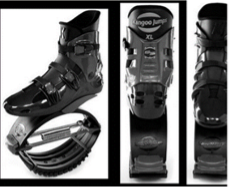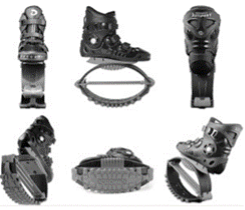Établissement Amra, is a commercial company which is the proprietor of EU three-dimensional trade mark No 10627917, registered for the goods in Class 28 listed below:

On 7 February 2018, he filed a notice of opposition to the application for registration of the following three-dimensional mark, owned by eXpresio estudio creativo S.L. However, this was rejected:

As the eXpresio mark was registered on 12 October 2019, Établissement Amra filed an application for a declaration of invalidity before the Cancellation Division of EUIPO, which dismissed the application in its entirety. In response to that decision, the appellant appealed to the First Board of Appeal of EUIPO, which also dismissed the appeal.
In the same vein, at the last instance, on 17 May 2021, Établissement Amra appealed to the General Court against EUIPO’s decision, seeking to examine whether it erred in holding that the absolute ground for refusal provided for in Article 7(1)(e)(ii) of Regulation 2017/1001 did not apply to the mark at issue.
Decision of the General Court
Determination of the essential characteristics of the sign
Having regard to the contested decision which found that the essential characteristics of the sign are determined on the basis of the perception of the relevant public, and that the distinctiveness of the word elements of the mark at issue is an essential characteristic of the mark at issue, the Board held that EUIPO was wrong to take those two factors into account, for the following reasons:
First, as regards the assessment of the distinctive elements, the Court ruled that these are intended to assess the function of indicating the origin of the goods in the eyes of the consumer, and thus differ from the determination of the essential elements of shape. For this reason, to perceive the distinctive character of the word elements of the sign in the identification of the essential characteristics is an error. It should also be recalled that the concept of ‘essential characteristics’ of a sign does not refer to the concept of ‘distinctive elements’ of the sign, but only to the concept of ‘most important elements of the sign’.
Furthermore, in accordance with Article 7(1)(e), the perception of the relevant public only serves as a useful element of assessment for the competent authority in determining which elements are perceived to be the most important, for the specific purpose of enabling the functionality of the shape at issue to be examined. The Board of Appeal therefore also wrongly took this factor into account.
Assessment of the functional or arbitrary character of the essential characteristics
After examining the elements constituting the mark at issue, the Board held that they had ‘a technical function necessary to ensure that a person rebounds in a balanced, controlled and stable manner in the context of a sporting or recreational activity’.
Those elements, which are essential and perform a necessary function to obtain a technical result, are indispensable and inseparable elements, the shape of which constitutes the mark at issue, as is clear from the patents in the file.
Those elements therefore correspond to the expression ‘essential characteristics’.
Determining whether the word and figurative elements play an important role in the shape of the product and are necessary to obtain a technical result such as to be considered essential
As regards the word element “aerower”, the Court concluded that it was insignificant as represented, so that its representation did not play an important role in such a way that it could be considered an essential characteristic of the mark at issue. The same was true of the word elements ‘jumper 1’ and ‘m’, which, because of their small size and location, were not perceived as essential characteristics of the mark at issue.
As regards the circular figurative element, the Court held that it was an abstract and banal element, which did not particularly attract attention and was therefore not visually striking.
Consequently, since the word and figurative elements present in the mark at issue were not essential, it did not consider it necessary to rule on their functionality.
Consequently, the Court, finding that the shape which was the subject of the application for protection was the most important part in the overall impression produced by the sign, held that the Board of Appeal of EUIPO had wrongly concluded that the word and figurative elements of the mark at issue were essential and, in the light of the foregoing, allowed the appeal brought by Établissement Amra, annulling the decision of EUIPO and ordering it to pay the costs.
ECLI:EU:T:2022:193 of 30 March 2022.


 Español
Español Deutsch
Deutsch